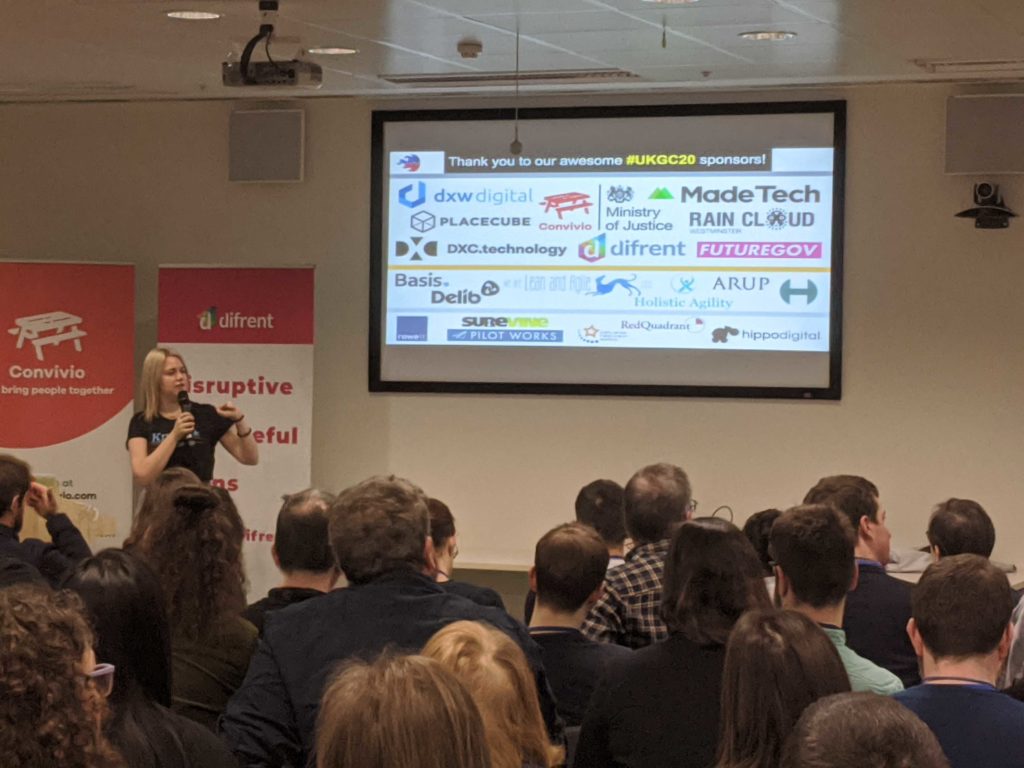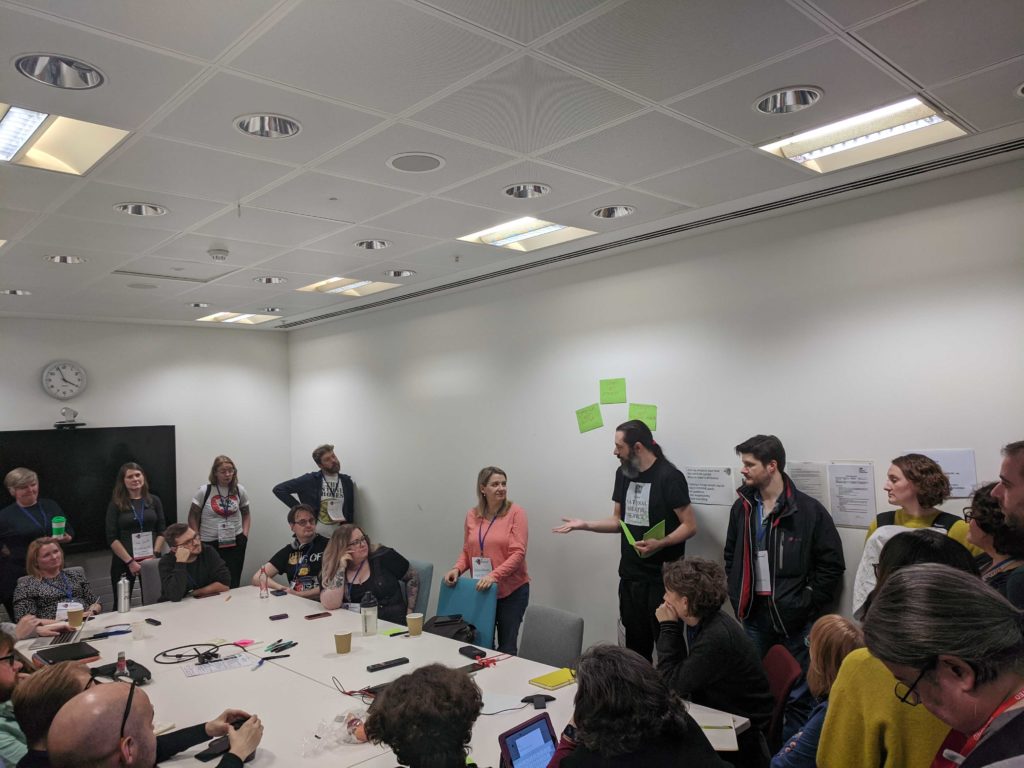Surevine sponsored UKGovCamp again this year and I was lucky enough to attend. UKGovcamp isn’t like a normal conference, in fact it’s the exact opposite. An ‘Unconference’ covering topics in the public sector digital space, with talks pitched on the day.
Pre-event
I popped along to the pre-event drinks the night before only to find that I didn’t recognise anyone. It didn’t take long to realise I followed half the pub on Twitter though! Matt Jukes obligingly explained how the event would run the following day – giving me food for thought on whether I might pitch at the unconference.
I arrived early to set up the sponsor stand and discovered a friend from Plymouth was also sponsoring on behalf of Rowe IT. We had a good chat and mooted possible collaboration in future. This is why I love these kinds of events – they are great places to meet people.
The pitching

Once the day got going, the first order of business was pitching sessions. I had been mulling over pitching an idea, and the atmosphere was so exciting that I nearly did. In hindsight, it wasn’t fully formed enough, but I absolutely will pitch next year now that I know how the sessions played out.
Nearly half the room stood up and formed a queue to the front, encouraged, cajoled and occasionally hugged for support by Amanda Smith and Janet Hughes. A mixture of long term attendees and first timers pitched a wide range of topics all the way from a sticker brainstorming session through to discussions around ethics, policy and much more.
Sessions
Choosing which sessions to go to was extremely difficult, but I ended up going to the following:
Artificial intelligence
This was a fairly broad session led by Gerald Power and James Hulme, encouraging people to share the ways they were using AI and discussing it’s potential. The conversation steered towards the permission aspect of facial recognition systems and issues around use of personal data. It seems clear the technology will reach maturity far sooner than our ability to handle the issues around consent. It will be interesting to see how these things pan out as legal precedent is established over the coming years.
One example given was that of shopping centres, where signs might indicate that CCTV is in use. But it seems unlikely that the implied consent given by voluntarily walking through the shopping centre would be enough to process and store facial image data. And yet technology such as this is already in use by law enforcement. Some shops are doing some interesting things to sidestep these issues such as taking pictures of people’s shoes since they are able to make good enough predictions about a person from this information alone, without needing to store anything personally identifiable.
Effective show and tells
An interesting discussion of different show and tell styles and contents put forward by Ert Erol and Caroline Jarrett (who previously spoke at one of our Techcellence sessions). There was a good mix of people in the room including some senior stakeholders who were typically consuming the show and tells, not producing them. Hearing their side of the story was interesting, especially with respect to some typical show and tell items that they feel are perhaps “wasting their time”. It’s always a tricky balance – if you’ve spent a lot of time in the sprint building a deployment pipeline it only feels right that that should get good coverage at the show and tell, even if it isn’t an end user feature. You can’t please everyone all the time! Clearly knowing your audience and judging the content accordingly is key, but also thinking about what your team needs to get out of the ceremony, so that you aren’t just ticking a box in your “Agile process”.
Digital Government Observatory
This was quite an interesting discussion from Richard Pope around whether there is a need for a “Which” style organisation to review and monitor government services. For example it might highlight that while there is a digital service for applying for Universal Credit, there is no digital service for appealing decisions. I suggested that perhaps something similar to User Voice might work well – at for surfacing user needs in a public way, not dissimilar to the Parliament Petitions service.
It was recognised that the parallels with “Which” magazine are slightly strained, since government services do not have competition – there is no choice for the user but to use them. This is not like choosing a toaster! But the room seemed broadly to think the idea had some merit and could complement the GDS service assessments.
Whether the organisation would have enough “clout” to actually effect change might be a tricky problem. There are already examples which spring to mind where GDS has been unable to influence direction of projects. Would an external organisation actually be able to influence product backlogs?
NHSX WTF? We need your help!

This session was packed! Terence Eden and Hadley Beeman gave us a run through of the goals and challenges in NHSX’s mission. There’s clearly a lot of love and care for the NHS and it showed in this session. But there was also a recognition that there are some extremely difficult problems coming up.
For example – the aging pager system used by NHS staff is insecure to the point that anyone with some inexpensive radio gear and a laptop can intercept the messages going around the system and read the contents which often contains names, addresses and of course medical details. It feels like something Surevine would be well placed to make a good impact on.
Wrap up
All in all it was a great day. I was extremely impressed by the running of the event, and the atmosphere throughout the day was fantastic. The efforts to make it as inclusive as possible were evident, including things like running a creche for parents who wanted to attend, or having a dedicated quiet space.
I left the day feeling inspired and happy to be working amongst some great people. Hope we can be there again next year!